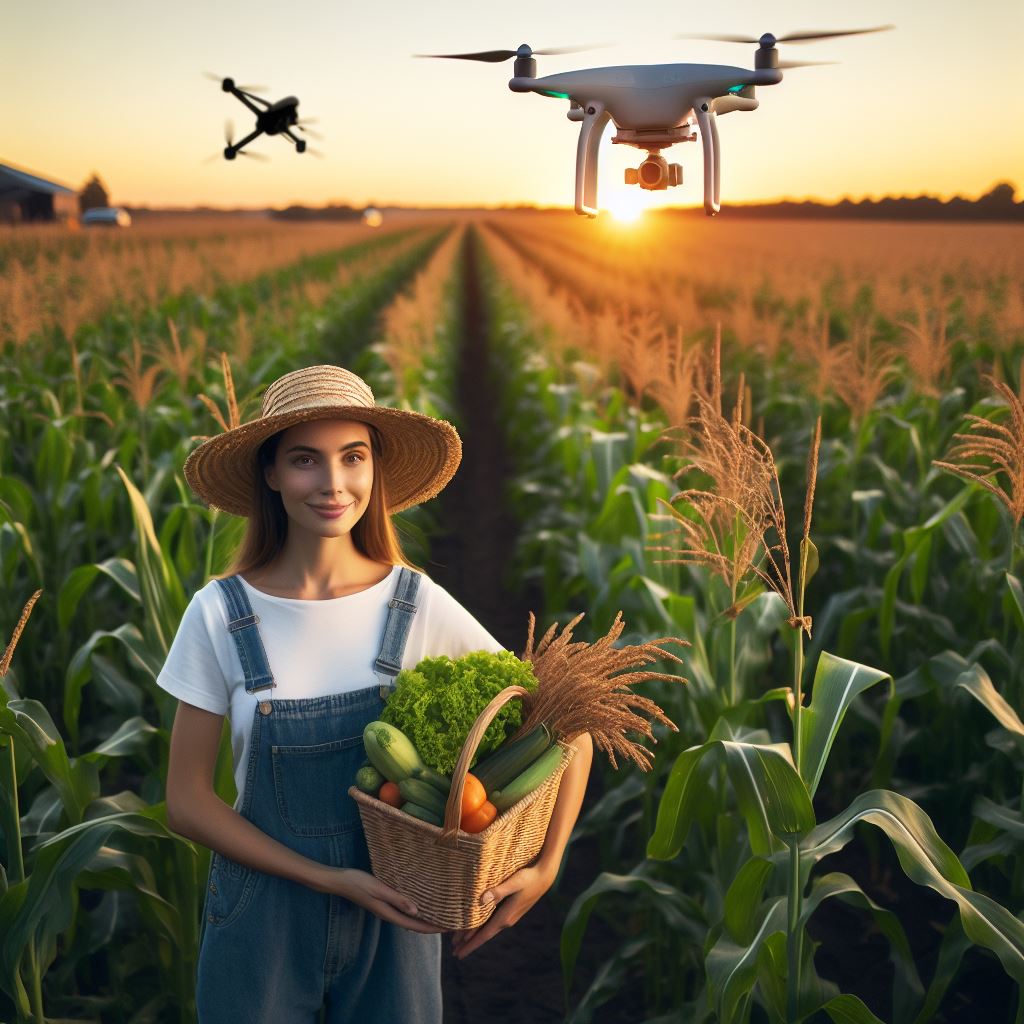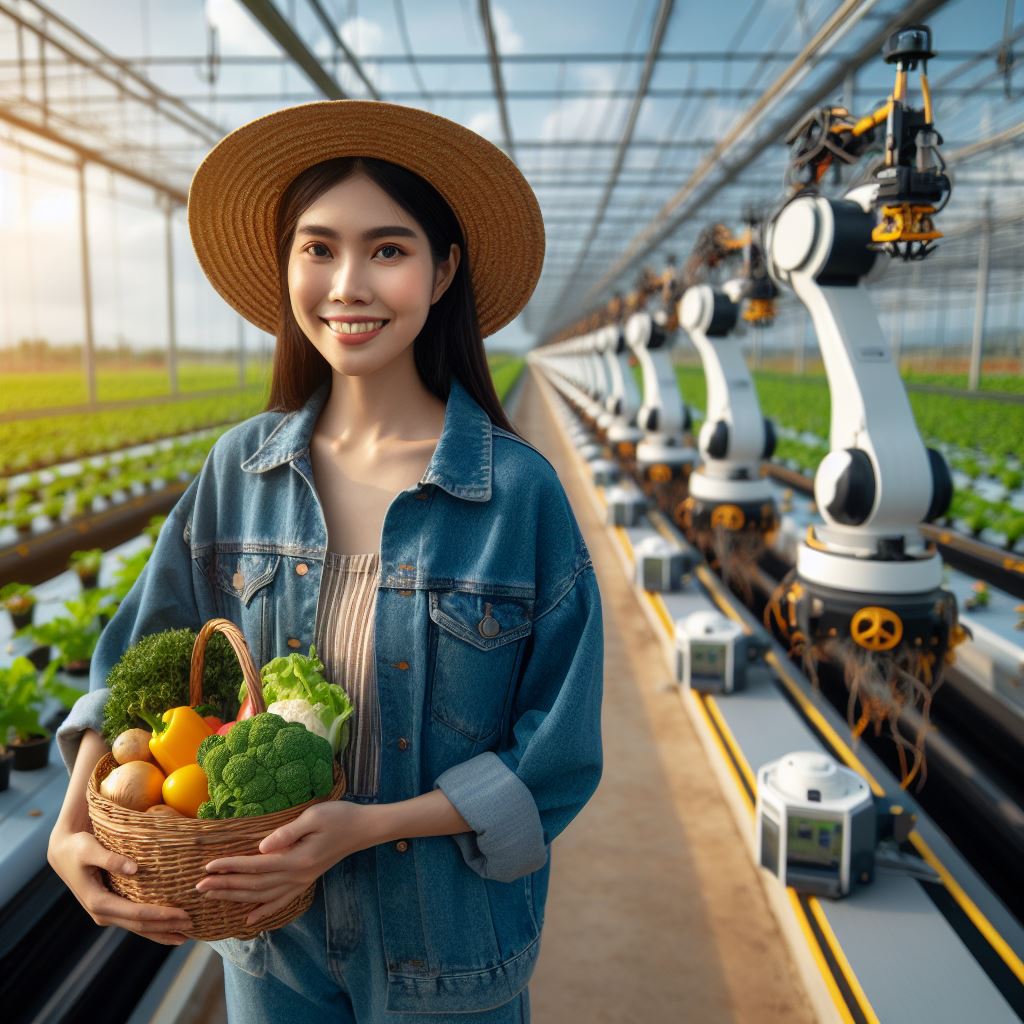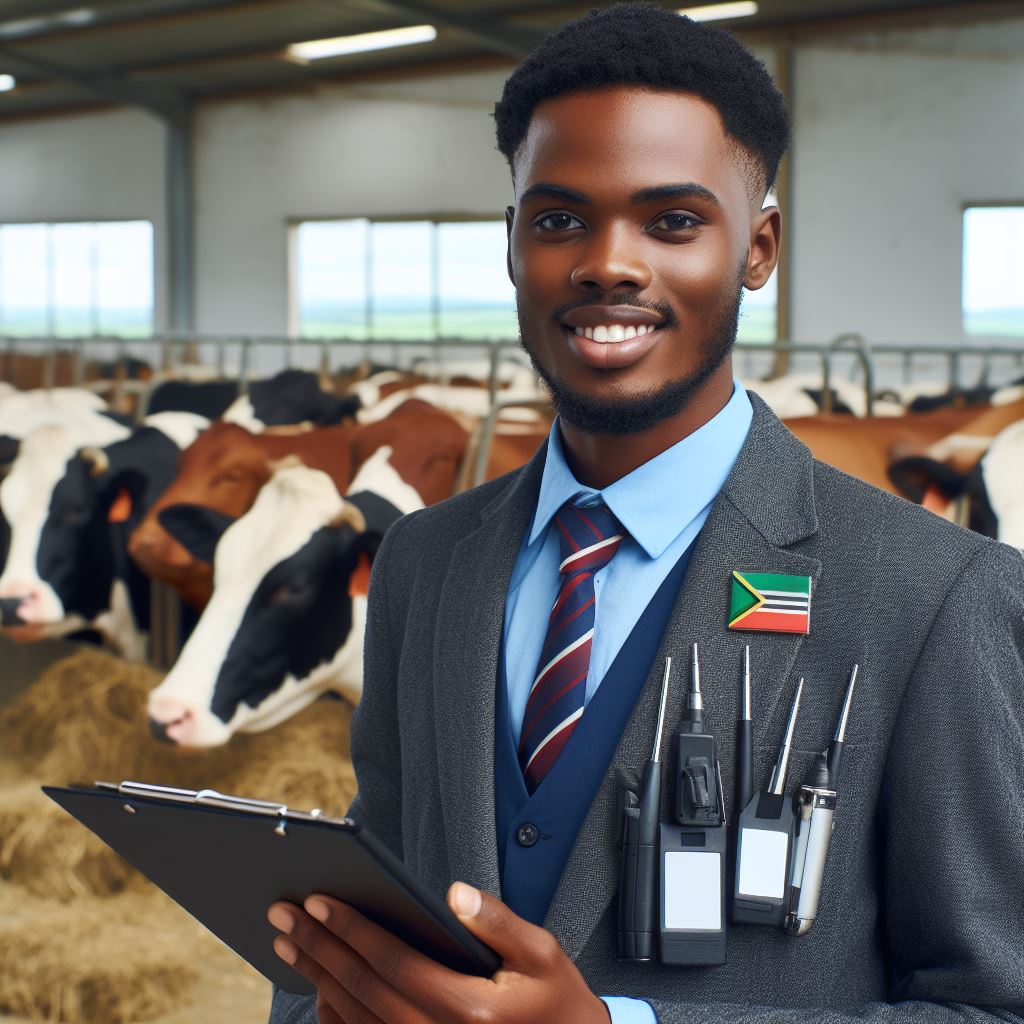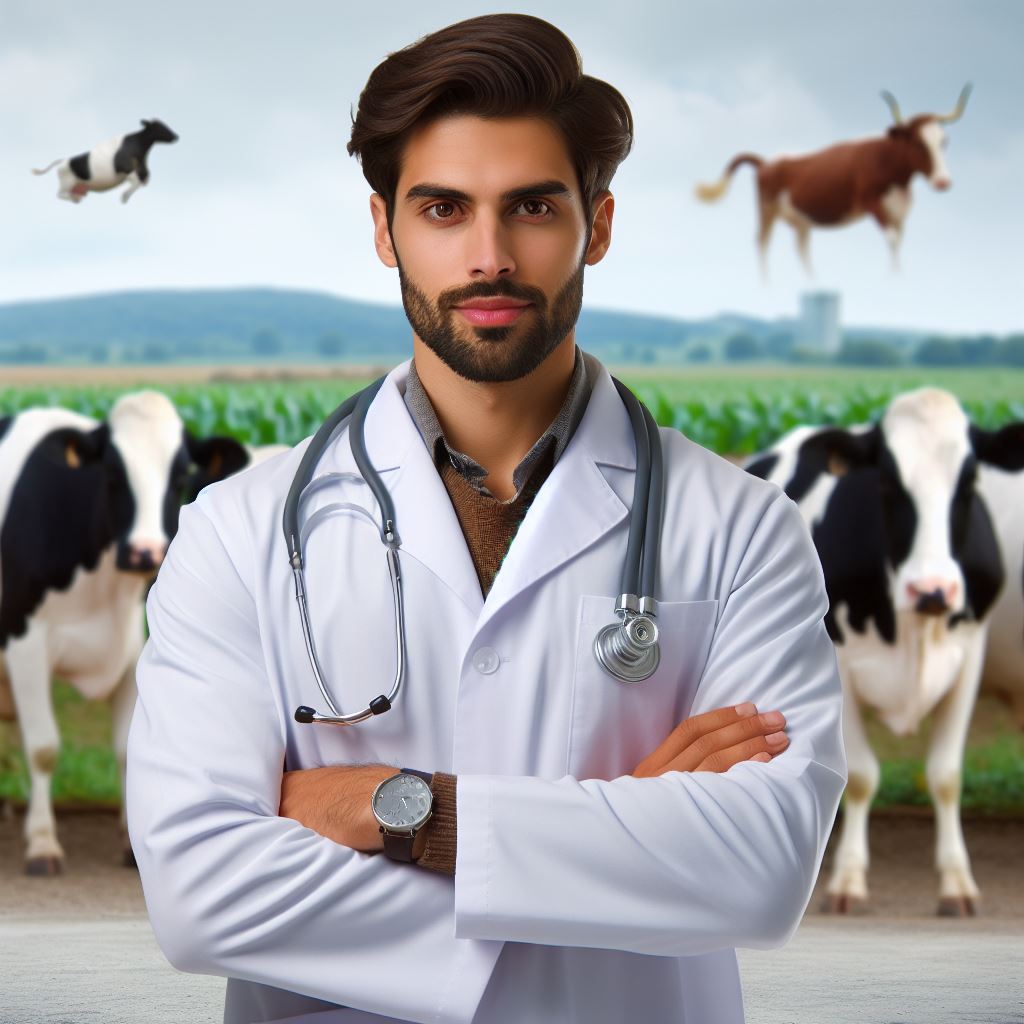Introduction
Drones have become an essential tool in agriculture, revolutionizing farming practices through advanced technology.
Drone technology in agriculture offers benefits like improved crop management, precision farming, and efficient data collection.
Importance of drone technology in agriculture
Drone technology revolutionizes agriculture with its ability to provide real-time data on crop health, moisture levels, and soil conditions.
Drones enable precision farming practices such as targeted spraying, leading to increased yields and reduced resource usage.
By optimizing crop management, drones contribute to sustainable agriculture, ensuring food security and environmental conservation in the face of growing global demand.
Need for updated USDA regulations
Updated USDA regulations are crucial to ensure food safety, sustainability, and consumer trust.
Evolving agricultural practices, technological advancements, and emerging threats necessitate regular revisions.
Updated regulations promote innovation, address environmental concerns, and uphold standards for product quality and animal welfare.
They foster transparency and compliance, safeguarding public health and the integrity of the food supply chain.
Overview of Drone Technology in Agriculture
Definition and Purpose of Drone Technology
Drone technology refers to the use of unmanned aerial vehicles (UAVs) for various purposes, including agriculture.
Drones are remote-controlled devices that can fly autonomously or be piloted by an operator.
The main purpose of using drones in agriculture is to enhance farming practices by collecting data, monitoring crops, and improving overall efficiency.
Drones can be equipped with different sensors and cameras to collect valuable information.
Various Applications in the Agricultural Industry
Drones have numerous applications in the agricultural industry, providing farmers with valuable insights.
Some of the key applications include:
Transform Your Agribusiness
Unlock your farm's potential with expert advice tailored to your needs. Get actionable steps that drive real results.
Get Started- Field Mapping: Drones can capture aerial images and create accurate 3D maps of the fields, helping farmers monitor the health and growth of crops.
- Pest and Disease Management: Drones equipped with thermal or multispectral cameras can detect crop stress, diseases, and pest-infested areas, enabling timely intervention.
- Irrigation Management: Drones can analyze soil moisture levels and provide data to optimize irrigation systems, reducing water usage and improving crop yield.
- Spray Application: Drones equipped with spraying systems can effectively apply fertilizers, pesticides, and herbicides to specific areas, reducing chemical usage and improving precision.
- Livestock Monitoring: Drones can be used to monitor livestock by capturing aerial footage and providing real-time information on their health, behavior, and location.
- Crop Health Assessment: By analyzing vegetation indices, drones can provide farmers with valuable insights into crop health, nutrient deficiencies, and overall plant vigor.
Advantages of Using Drones in Farming
The use of drones in farming offers several advantages, revolutionizing the traditional agricultural practices. Some key advantages include:
- Efficiency: Drones can cover large agricultural areas quickly, providing farmers with timely data and reducing the time and effort required for manual inspections.
- Precision Farming: Drones enable precision agriculture, allowing farmers to make data-driven decisions and optimize their farming practices for better crop yields.
- Cost-effective: Drones can significantly reduce operational costs in farming by optimizing the use of fertilizers, pesticides, and water resources
- Safety: By employing drones for aerial inspections and data collection, farmers can avoid potential risks and hazards associated with manual labor and climbing heights.
- Sustainability: Drones aid in sustainable farming practices by minimizing the use of chemicals, optimizing resource utilization, and reducing environmental impact.
- Data-driven Insights: Drone technology provides farmers with detailed and accurate data, enabling them to make informed decisions and improve crop management practices.
Generally, drone technology has transformed the agricultural industry by offering various applications and advantages.
The use of drones in farming helps improve efficiency, precision, and sustainability while providing farmers with valuable data for better decision-making.
Current USDA Regulations for Drone Use in Agriculture
Explanation of existing regulations
The USDA has established regulations for the use of drones in agricultural operations.
These regulations aim to ensure the safe and responsible use of drones in farm settings.
Farmers need to adhere to these regulations to avoid legal consequences and ensure public safety.
Drones used in agriculture must comply with the Federal Aviation Administration (FAA) rules and regulations.
These rules include registering the drone, obtaining proper certification, and following flight restrictions.
Restrictions and limitations on drone usage
- Drones must only be operated within the line of sight of the operator without the aid of visual aids.
- They should not fly higher than 400 feet above the ground or exceed a speed of 100 miles per hour.
- Drone flights in restricted airspace, such as near airports or military installations, are strictly prohibited.
- Additionally, drones must not be operated over people or moving vehicles for safety reasons.
- Operators should also refrain from flying drones at night to prevent accidents and potential damages.
Challenges faced by farmers due to outdated regulations
Farmers face challenges due to outdated regulations that do not fully address the needs of modern agriculture.
Existing regulations may restrict farmers from maximizing the potential benefits of drone technology.
For example, farmers often need to survey large areas of crops, and the line-of-sight requirement hinders efficiency.
Many farmers believe that regulations should be updated to allow for beyond visual line-of-sight operations.
Moreover, the current altitude limit of 400 feet can limit the effectiveness of certain crop monitoring activities.
These challenges highlight the need for the USDA to revisit and revise the regulations surrounding drone use in agriculture.
By staying up to date with advancements in drone technology and addressing the specific needs of farmers, regulations can better support the advancement of precision agriculture.
Read: Animal Antibiotic Use: New Rules
Importance of Updating USDA Regulations
Technological advancements in drone technology
The rapid evolution of drone technology presents a need to update existing USDA regulations.
Drones have become more sophisticated, capable of performing a wide range of tasks.
Updating regulations ensures that drone technology can be effectively utilized in the agricultural sector.
Old regulations may not adequately address the capabilities and potential applications of advanced drones.
The USDA must keep pace with technological advancements to support efficient and safe drone use in farming.
Potential benefits of using advanced drone technology in farming
- Advanced drone technology can revolutionize farming practices and enhance efficiency.
- Drones equipped with advanced imaging sensors can provide real-time data on crop health.
- This data enables farmers to detect crop diseases, nutrient deficiencies, and irrigation needs promptly.
- Precise monitoring allows farmers to tackle issues promptly, potentially reducing crop losses and optimizing yields.
- Drone technology can also facilitate precision spraying, minimizing the use of chemicals and improving environmental sustainability.
Discussion of safety measures and concerns addressed with updated regulations
- Updated USDA regulations can address safety concerns related to the use of advanced drone technology.
- Regulations can outline necessary training and certification requirements for drone operators.
- This ensures that operators possess the skills and knowledge needed to operate drones safely.
- Establishing no-fly zones and altitude restrictions helps prevent potential conflicts with other airspace users.
- The development of standardized safety protocols and procedures enhances overall safety in drone operations.
- Regulations can also address privacy concerns by imposing restrictions on drone surveillance activities.
- Clear guidelines regarding data collection and storage help protect farmer privacy and prevent misuse of data.
- Regular equipment inspections and maintenance requirements contribute to the safe operation of drones.
- Updated regulations foster public trust by demonstrating the USDA’s commitment to responsible drone use.
Essentially, updating USDA regulations is essential to harness the full potential of advanced drone technology in farming.
Technological advancements require regulations that align with current capabilities and address safety concerns.
The benefits of using advanced drones in agriculture, such as real-time data collection and precision spraying, can greatly improve productivity while reducing environmental impact.
Showcase Your Farming Business
Publish your professional farming services profile on our blog for a one-time fee of $200 and reach a dedicated audience of farmers and agribusiness owners.
Publish Your ProfileBy implementing safety measures and addressing privacy concerns, updated regulations can ensure the responsible and efficient integration of drones into farming practices.
It is crucial for the USDA to continuously update regulations to support the ongoing development of drone technology and promote its widespread adoption in the agricultural sector.
Read: Climate Change & Agri Policies

Recent USDA Regulations Update
Overview of the latest updates and changes
The United States Department of Agriculture (USDA) has recently introduced new regulations that specifically address the use of drones in the agriculture industry.
The updates aim to establish a clear framework for drone operators in the agricultural sector.
They cover various aspects, such as certification requirements, operational limitations, and safety guidelines.
Drone operators are now required to obtain a special certification from the USDA before using drones for agricultural purposes.
The certification process involves proving the operator’s knowledge of drone technology, operational procedures, and safety protocols.
Additionally, the USDA has imposed certain operational limitations to ensure safe and responsible drone usage in agricultural settings.
Impact on drone usage in agriculture
The new regulations have had a profound impact on the use of drones in the agriculture industry.
Drones are now being widely employed for a variety of agricultural tasks, including crop monitoring, yield prediction, and pest management.
Farmers and agronomists are leveraging drone technology to gather accurate and timely data, improving productivity and efficiency.
The use of drones has significantly reduced the time and resources required for traditional methods, such as manual field inspections.
Real-time aerial imagery and sensor data collected by drones enable farmers to make data-driven decisions for better crop management.
Overall, the regulations have facilitated the adoption of drone technology in agriculture and opened new possibilities for precision farming.
Analysis of the effectiveness of the new regulations
The effectiveness of the new USDA regulations in governing drone usage in agriculture is subject to analysis.
The requirements for obtaining certification have ensured that drone operators possess the necessary knowledge and skills to operate drones safely.
The regulations have fostered a sense of responsibility among drone operators, as they are aware of the potential risks and liabilities.
However, some critics argue that the certification process could be more rigorous to ensure higher proficiency and minimize incidents.
The operational limitations imposed by the USDA have contributed to enhancing safety measures and preventing unauthorized activities.
Nevertheless, there are concerns that the restrictions may hinder innovation and limit the full potential of drone technology in agriculture.
While the new regulations have undoubtedly brought structure and accountability to drone usage in agriculture, further evaluation and refinement may be necessary to strike the right balance between safety, innovation, and efficiency.
Read: Farming Aid Laws: 2024’s Comprehensive Guide
Key Considerations for Farmers
As drone technology continues to advance and the USDA updates its regulations, farmers need to keep several key considerations in mind.
Compliance with updated regulations
- Farmers must stay informed and comply with any new regulations set forth by the USDA.
- It is vital to understand the specific rules and restrictions associated with operating drones on agricultural lands.
- Regularly checking for updates and ensuring compliance can prevent potential legal issues and penalties.
Training and certification requirements for farmers
- Farmers should undergo proper training and obtain necessary certifications to operate drones safely and legally.
- Training programs can provide farmers with the knowledge and skills required to effectively utilize drones in their agricultural operations.
- Having certified farmers ensures responsible and professional use of drones, minimizing risks and maximizing productivity.
Costs and financial implications of adopting drone technology
While drone technology can offer numerous benefits, farmers must carefully consider the costs involved.
Investing in drones and related equipment can be significant upfront expenses for farmers.
Regular maintenance, repairs, and operational costs should also be taken into account when assessing the financial implications.
However, it’s important to weigh these costs against the potential long-term benefits and increased efficiency that drones can bring to farming operations.
Calculating return on investment and considering potential cost savings can help farmers make informed decisions.
Summarily, farmers venturing into the use of drone technology should prioritize compliance with USDA regulations, obtain the necessary training and certifications, and carefully consider the costs involved.
While it may require effort and investment, embracing drone technology can revolutionize agricultural practices and lead to increased productivity and efficiency on the farm.
Read: 2024’s Key Agri Policies: A Deep Dive
Future Prospect of Drone Tech and USDA Regulations
Emerging trends and developments in drone technology
- Integration of artificial intelligence and machine learning in drone systems.
- Advancements in battery technology leading to longer flight times and increased efficiency.
- Improvements in obstacle avoidance and collision detection capabilities for safer operations.
- Development of specialized drones for specific tasks such as crop monitoring and pesticide application.
- Enhancements in data collection and analysis methods for better decision-making on farms.
Anticipated changes in USDA regulations
- Revisions to existing regulations to accommodate the use of advanced drone technology.
- Implementation of stricter safety guidelines to ensure the protection of people and property.
- Introduction of new regulations to address privacy concerns related to drone surveillance.
- Collaboration with industry stakeholders to establish standardized certification and training programs.
- Integration of drones within existing agricultural programs to support sustainable practices.
Potential benefits and challenges for farmers in the future
With the continued development of drone technology and the evolution of USDA regulations, farmers can expect both benefits and challenges.
Potential benefits
- Enhanced crop monitoring capabilities allowing for early detection of diseases, pests, and nutrient deficiencies.
- Precision agriculture through targeted applications of fertilizers, pesticides, and water resources, leading to cost savings.
- Improved yield predictions and crop management strategies for optimized production and profitability.
- Time-saving and labor-reducing capabilities in various farm operations, increasing overall efficiency.
- Access to valuable data insights for informed decision-making and better resource allocation.
Potential challenges
- High initial costs associated with purchasing and maintaining drone systems.
- Integration challenges into established farming practices and workflows.
- Concerns regarding data security and privacy with the collection and storage of sensitive farm information.
- Regulatory compliance requirements and the need for proper training and certification.
- Potential resistance and skepticism from some farmers due to unfamiliarity with drone technology.
Despite these challenges, the future prospects of drone technology in agriculture are promising.
As technology advancements continue, costs are likely to decrease, and drones will become more accessible to farmers of all scales.
The USDA plays a crucial role in ensuring the safe and responsible integration of drones on farms through appropriate regulations.
By addressing concerns related to safety, privacy, and standardization, the USDA can foster the widespread adoption of drones in agriculture.
Ultimately, the future prospect of drone technology and USDA regulations holds immense potential in revolutionizing the agricultural industry.
With their ability to overcome challenges and leverage the benefits, farmers can embrace drones as valuable tools for efficient and sustainable farming practices.
Conclusion
Recap of the importance of updated USDA regulations
Updated USDA regulations play a vital role in ensuring the safe and responsible use of drone technology in agriculture.
Showcase Your Farming Business
Publish your professional farming services profile on our blog for a one-time fee of $200 and reach a dedicated audience of farmers and agribusiness owners.
Publish Your ProfileThese regulations provide guidelines and standards that protect both farmers and the environment.
Encouragement for farmers to embrace drone technology
Farmers should embrace drone technology as it offers numerous benefits such as increased efficiency, cost savings, and improved crop management.
By using drones, farmers can gather valuable data and make informed decisions to optimize their operations.
Final thoughts on the role of drone tech in the agricultural industry
Drone technology has revolutionized the agricultural industry, improving productivity and sustainability.
With the ability to monitor crops, survey land, and apply fertilizers with precision, drones are transforming the way farmers approach their work.
In closing, updated USDA regulations are crucial for ensuring the safe integration of drones in agriculture.
Farmers should embrace this technology to gain a competitive advantage and maximize their yields.
The future of the agricultural industry lies in the effective utilization of drone tech for efficient and sustainable farming practices.




